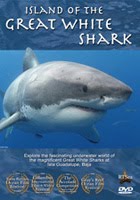 A new report released today by the World Wildlife Fund (WWF) and the UK-based Catlin Arctic Survey confirms what many other studies and research projects have been saying: the Arctic is melting faster than previously predicted.
A new report released today by the World Wildlife Fund (WWF) and the UK-based Catlin Arctic Survey confirms what many other studies and research projects have been saying: the Arctic is melting faster than previously predicted. In this report, Arctic Climate Feedbacks: Global Implications (you can download the executive summary or the entire report), it was determined that the Arctic Ocean will be mostly ice-free during the summer within a decade and totally devoid of summer ice within 20 years. Research has found that much of the ice is now comprised of "first year ice" - new ice as opposed to older ice that would typically form a year-round foundation. Measurements also showed the ice to be thinner and not sufficient to survive next summer's ice melt.
In this report, Arctic Climate Feedbacks: Global Implications (you can download the executive summary or the entire report), it was determined that the Arctic Ocean will be mostly ice-free during the summer within a decade and totally devoid of summer ice within 20 years. Research has found that much of the ice is now comprised of "first year ice" - new ice as opposed to older ice that would typically form a year-round foundation. Measurements also showed the ice to be thinner and not sufficient to survive next summer's ice melt.It's not just warmer temperatures that is causing this increasing meltdown. The Arctic ice reflects sunlight but as it melts and darker ocean surfaces are exposed, a feedback effect occurs wherein the exposed ocean retains more heat, which melts more ice, which exposes more ocean, and so on.
There is also a considerable amount of CO2 held within the ice that is then released, along with CO2 and methane that is released from the Arctic's permafrost, the land's frozen layer of topsoil. All this adds to and accelerates the effects. These are some of the variables that have skewed prior computer models, contributing to a string of revised estimates.
All of this has impacts on the lower latitudes with altered weather patterns due to changes in temperature gradients both in the ocean and in the atmosphere. Further on, there would be the impact on sea levels that result from melted ice not only in the polar Arctic but in areas such as Greenland. So, we're not immune to the effects of losing Arctic sea ice.
Working with InMER.org, I had the opportunity to explore some of the Arctic region in an area known as the Northwest Passage. The InMER team documented changes that were occurring, from reduced sea ice levels to anecdotal evidence from Inuit Indian leaders and government officials. Several clips that reflect the results of the expedition can be found in Google Earth in the ocean areas of northern Canada. Here's one:

















No comments:
Post a Comment